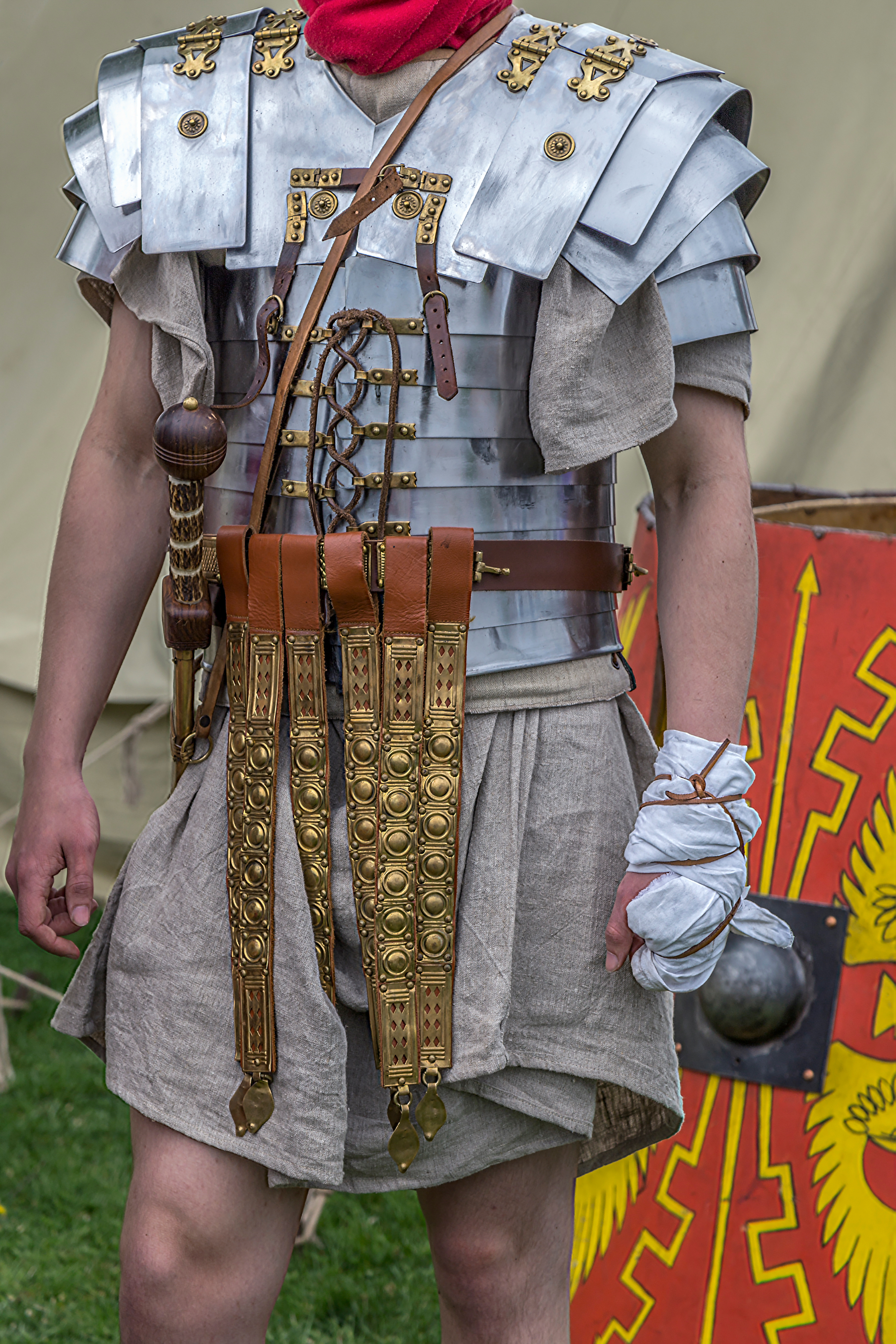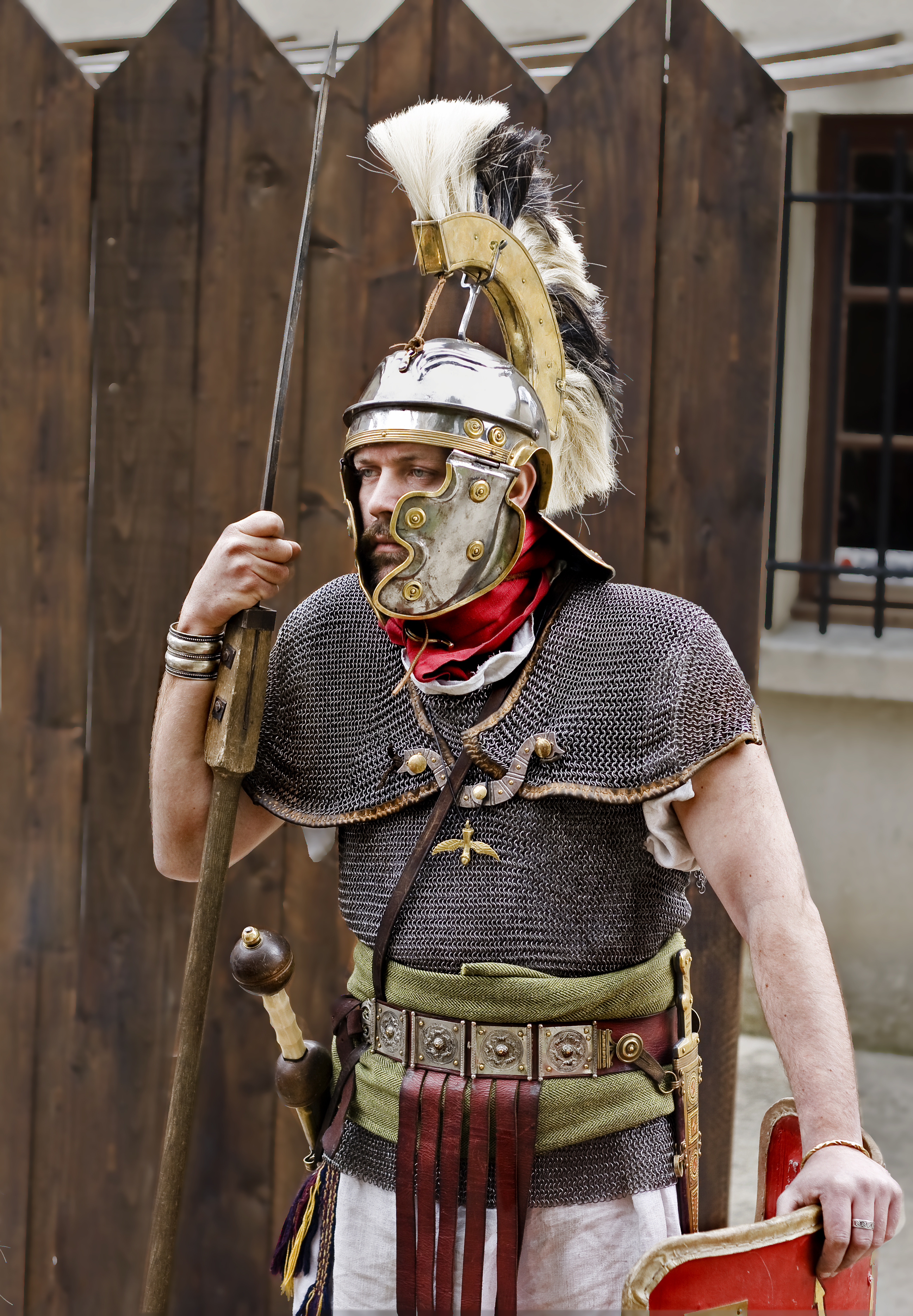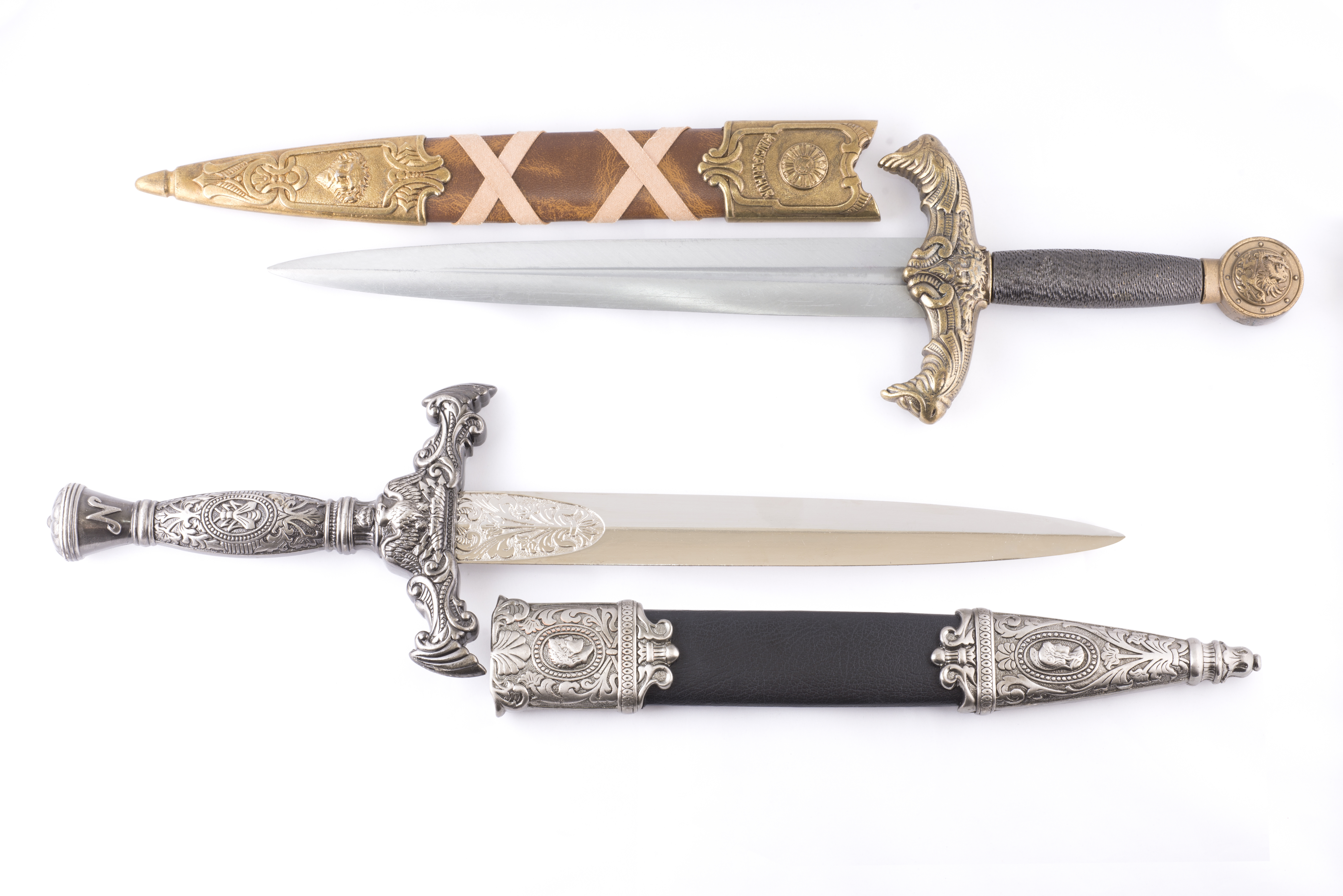
Roman soldiers would wear a belt around their waist.
I have not seen much discussion on the purpose of the belt. It would be the base for carrying some items. For example, a dagger, called a puglio, would be on the left side. A money pouch could be carried on the belt, I suppose.
See update below for comments on purpose of a balteus.
All the comments I’ve read and all the photos of reenactors I have seen describe leather straps hanging from the front of the belt. Since the straps are not woven together and don’t have any more depth than one layer, I cannot image they would provide any protection to the abdomen. It seems to me those are decorative items.
If a soldier was wearing chain mail, the belt could be tightened around the mail, thus transferring some of the weight from the shoulders to the hips. That might be good for balancing the load.

The sword, or gladius, would not be hung on the belt. All the discussion I’ve seen says the gladius was worn on the right side for soldiers and carried on a long belt that was looped above the left shoulder.
Parts of the belt, according to The Romans in Britain website:
- Belt – Balteus or cingulum
- Buckle – fibula
- Dangling leather straps – Baltea
- Studs, or pieces of decorative metal on baltea – Bulla, plural bullae
- Pendants at bottom of baltea – pensilia, singular pensillum
- Dagger, hanging vertical off belt on left side – pugio

Update 8/19/19 – The pugio would have some value as a last ditch defensive weapon. It would have minimal value on the offense. My guess is its value was for everyday use. If you needed to cut some rope, do some minor woodwork, or dispatch an animal for dinner with your contubarium, your squad with whom you worked, slept, and ate, a pugio would be the perfect tool.
Still been struggling with sorting out the use of the balteus. Can’t see how those dangling strips of leather could possibly provide any defensive value.
Two books I read on the Armor of God discussed in Ephesians chapter 6 attributed protective value to the belt. Those two authors saw the leather as providing protection to the lower abdomen and groin areas. That does not make any sense.
Finally saw an explanation that makes sense.
Chris McNab is editor of The Roman Army, The Greatest War Machine in the Ancient World.
He explains the belt provided identification and identity to a legionnaire. There was no other identifying information anywhere on the standard uniform. He points out the cloak and tunic worn by soldiers was similar to what civilians would wear. The belt identified a soldier as a soldier. The attached silver or bronze pieces would provide whatever identification there might be. Decorations for a unit or individual would be worn on one of the straps.
Juvenal is cited as describing soldiers as “armed and belted men.” If a legionnaire was dishonorably discharged, one ancient source (Herodian) says the soldier would be stripped of his belt, thus removing his identity.
Ah ha. The belt, and attached decorations, provided identity and identification.
Consider the modern military. When I was on active duty, my work uniform contained my rank, the letters “U.S.” to declare what country I was proudly part of, my squadron patch, name tag, insignia to show my specialty was in the missile business, and another insignia which declared I was “combat crew.” Those pieces of cloth identified me, my rank in the military hierarchy, my unit, and my job responsibilities.
Here is the transition backward in time: Take all those cloth identifiers off the shirt portion of my uniform and convert them to metal tabs and attach them to leather straps on belt worn around a legionnaire’s waist.
Update: To reinforce my confusion on whether the Bullae (studs) on the dangling Baltea (strips of leather) would provide protection, consider Simon Forty’s comments in Roman Soldier Operations Manual. Author says that some reenacting groups have conducted experiments and concluded the dangling leather provides no protection to the lower abdomen, crotch, and upper thighs. That makes sense.
More discussion of weaponry of Roman Legionnaires.
3 thoughts on “Balteus or cingulum- belt worn by Roman Legionnaires. Pugio – dagger carried by soldiers.”
Hi, I have been researching the armor and what you’ve written about the belt and identification of the soldier seems very plausible as a further explanation of the spiritual truths Paul is communicating, but in using historical information to help interpret scripture I like to have several sources. I’m having difficulty finding your hypothesis any where else. Can you direct me to more resources? Thanks!
Hi Sherri:
In terms of outlining the basic concept, most commentaries should provide an overview. For longer discussion, search Amazon or B&N for ‘armor of God.’ I bought two that seemed helpful. One has been great and the other not so much.
Thanks for taking the time to read and comment.
Jim